
Frame by Frame
The Art and Science of Stellar Storytelling

By Jason Schuler on August 1, 2025
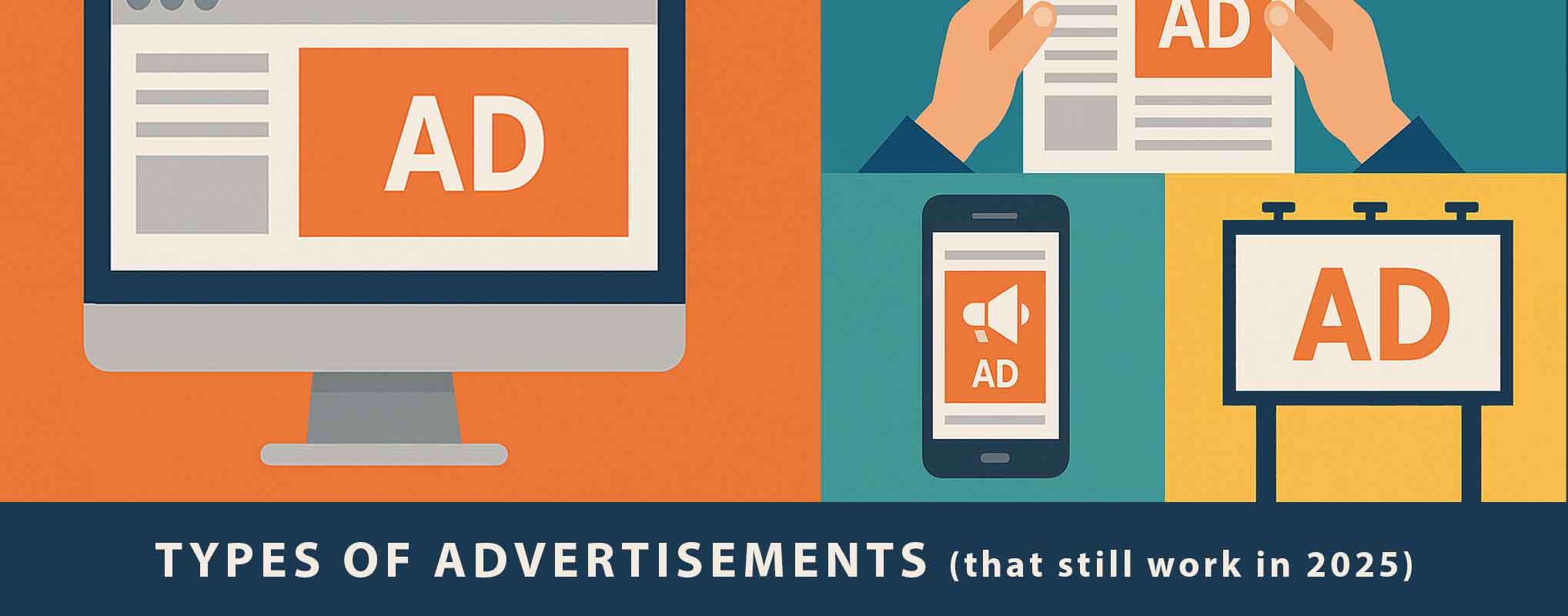
There’s no shortage of places to put your ad dollars in 2025. But not all platforms are created equal. And depending on your brand as well as who you are trying to reach, some of the types of advertisements may not be worth your budget.
Digital media now makes up nearly 64% of the total 12 hours and 37 minutes per day U.S. adults spend with media. That means over 7 hours a day are spent on digital devices (everything from smartphones to Connected TVs). As traditional TV declines to just 2 hours and 48 minutes per day, the shift toward digital is growing. Attention is more fragmented than ever before, but it’s not entirely gone. In fact, a recent Statista study found that 65% of global marketers say multichannel advertising improves campaign performance by increasing both engagement and ROI.
Which brands are getting the most from these channels?
A word of context: this isn’t a list of every new app or buzzword. It’s a breakdown of each type of advertising that is actually driving results right now…across various industries, budgets, and business models. And as always, if you’ve got a killer story to tell and the right creative to back it up, pretty much any channel can work.
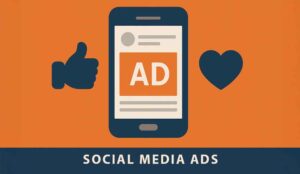 1. Social Media Ads
1. Social Media AdsWhat it is: Sponsored content on platforms like Instagram, Meta, LinkedIn, TikTok, YouTube, and Snapchat.
Why it still works: It meets people where they scroll — and when the creative blends in, it gets watched.
Best for: DTC, retail, challenger brands, digital-first businesses
This is still the most versatile advertising channel for digital marketing focused teams. Whether you’re launching a new product or running a retargeting campaign, social lets you serve performance-based creative at scale. The top-performing video advertising here doesn’t feel like an ad — it feels like content. UGC-style clips, lo-fi influencer demos, and quick-hit humor outperform traditional polished promos. The format changes, but the strategy is the same: grab attention, create emotion, and make action feel easy.
Who this channel reaches best:
Social media ads are still the most dynamic option for reaching younger, mobile-first audiences; but they’re no longer just for Gen Z. Meta’s platforms reach a broad base of millennials and Gen Xers with high spending power, while TikTok and YouTube continue to dominate among younger and mid-range demos. If your product has mass appeal or visual flair, social is often your first (and most affordable) touchpoint.
What creative performs best here:
Native-looking content wins. Ads that feel like organic posts, especially lo-fi, selfie-style, or UGC-based, outperform heavily branded assets. Bold captions, fast pacing, and direct hooks in the first 3 seconds are critical. Think less “ad” and more “someone like me showing something cool.”
How this channel fits into the funnel:
Social excels at top-of-funnel discovery and middle-of-funnel engagement. It’s not always the best final touch before conversion, but it’s excellent at priming the audience. Smart brands pair it with retargeting or email to close the loop.
Common pitfalls to avoid:
Too much polish. Ads that scream “production” often feel like brand theater and get scrolled past. Another mistake: failing to adapt your content to the platform…what works on LinkedIn rarely works on TikTok.
Trends or innovations in 2025:
Interactive elements are on the rise: polls, carousel storytelling, in-ad product tags, and click-to-message flows are turning passive viewers into active participants. TikTok’s Spark Ads and Meta’s Advantage+ placements are also making it easier to scale content that already performs.
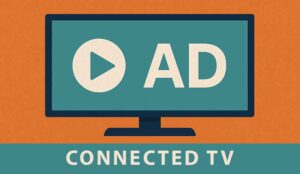 2. Connected TV (CTV)
2. Connected TV (CTV)What it is: Video ads streamed through smart TVs, apps, and over-the-top services like Roku, Hulu, or YouTube TV.
Why it still works: You get lean-back engagement with digital precision.
Best for: B2B brand building, regional campaigns, healthcare, and retail
CTV has matured into one of the most powerful advertising mediums for mid-market and enterprise brands. It combines the storytelling power of TV commercials with the targeting flexibility of programmatic advertising. It’s especially useful when you have a high-quality brand video and want to reach a specific target audience by household income, geography, or behavior. No skipping, no scrolling. Just full-screen, high-impact video.
Who this channel reaches best:
CTV reaches households that have moved beyond cable but still enjoy lean-back viewing. It’s ideal for targeting affluent, tech-savvy, and family-oriented viewers – especially those who binge stream during evenings or weekends.
What creative performs best here:
Strong visual storytelling with a brand hit in the first 5–8 seconds. Cinematic polish works well, but so do stylized explainers or emotionally grounded narratives. The key is to respect the medium. People are watching on their TVs, not phones.
How this channel fits into the funnel:
CTV is a hybrid tool. It’s great for top-of-funnel brand building, but with the rise of interactive formats (QR codes, personalized retargeting), it’s becoming effective for mid-funnel engagement too.
Common pitfalls to avoid:
Treating it like YouTube pre-roll. Ads designed for short attention spans may fall flat on CTV. Likewise, failing to customize creative by audience segment wastes the targeting potential.
Trends or innovations in 2025:
Programmatic creative swaps are becoming more common (same ad structure, but with tailored intros, calls to action, or voiceover). QR codes are no longer gimmicks. They convert, especially for events, limited-time offers, and apps.
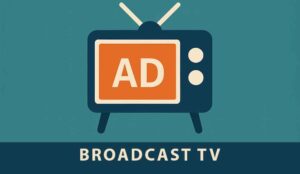 3. Broadcast TV
3. Broadcast TVWhat it is: Traditional linear TV ads, both local or national, delivered through cable or network stations.
Why it still works: It lends authority and still reaches key demographics who trust it.
Best for: Local service businesses, legal, healthcare, political, or event-driven campaigns
While digital platforms have eaten up budget, broadcast TV remains a credible and effective advertising channel. This is particularly true for brand awareness campaigns in hyper specific markets. It’s ideal for reinforcing name recognition and making a strong first impression, especially among older or regional audiences who still prefer traditional media. Pair it with digital for a hybrid campaign that stretches reach and multiplies impressions.
Who this channel reaches best:
Broadcast TV still holds value among older audiences, local markets, and during live events (especially sports and news). If you’re trying to build authority or trust in a regional area, it’s a powerful tool.
What creative performs best here:
Simple, direct messaging with clear visuals and a memorable tagline. Broadcast favors clarity and recall over subtlety. Ads with jingles, slogans, or strong visual cues tend to stick.
How this channel fits into the funnel:
Top-of-funnel awareness. It doesn’t do conversion well on its own, but it can raise brand familiarity quickly, which makes digital retargeting far more effective.
Common pitfalls to avoid:
Neglecting daypart or placement. Running a commercial at the wrong time or without aligning with relevant programming is wasted spend. Another mistake: trying to say too much in 30 seconds.
Trends or innovations in 2025:
More local businesses are using hybrid campaigns; running short TV bursts to spike awareness, then retargeting digitally using geofenced video and search. It’s a smart way to extend the life of a high-cost spot.
 4. Paid Search
4. Paid SearchWhat it is: Text ads triggered by keyword queries on platforms like Google and Bing.
Why it still works: You meet the customer at the moment of intent.
Best for: Service businesses, SaaS, healthcare, e-commerce, local B2C
Paid search remains one of the most reliable channels for performance marketing. Whether it’s “emergency plumber near me” or “best CRM for nonprofits,” showing up in that exact moment gives you the edge. The competition is steeper and the costs are higher in 2025, but smart ad copy and landing page alignment drive tons of conversions. This is less about storytelling and more about clarity, trust, and showing up where people need you.
Who this channel reaches best:
Paid search reaches high-intent users, like, people who are actively looking for solutions, providers, or answers. It works well for service-based businesses, SaaS, healthcare, and anything with clear keywords tied to problems.
What creative performs best here:
Concise, benefit-driven headlines with a strong value prop and a clear CTA. Ad extensions (sitelinks, callouts, location) also lift CTR when used strategically.
How this channel fits into the funnel:
This is bottom-of-funnel territory. It’s where people convert or at least start seriously comparing options. It’s also excellent for remarketing to warmer leads who didn’t act on their first visit.
Common pitfalls to avoid:
Sending paid traffic to generic homepages or poorly optimized landing pages. Another big one: bidding on vanity terms with no real purchase intent.
Trends or innovations in 2025:
AI-generated headline testing is speeding up optimization. Also, Google’s Performance Max campaigns are now delivering more control to advertisers who know how to feed them the right creative assets.
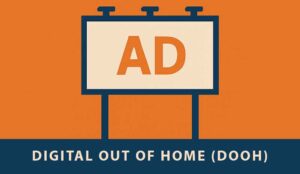 5. Digital Out-of-Home (DOOH)
5. Digital Out-of-Home (DOOH)What it is: Digital billboards, transit screens, and programmatic signage in public places like malls, gyms, and airports.
Why it still works: It’s physical, visible, and smarter than ever.
Best for: Retail, entertainment, tourism, QSR, and large regional activations
DOOH is no longer a static billboard. It’s a flexible, data-driven part of your digital advertising strategy. You can now update creative in real-time, geo-target placements, and sync messaging with weather, time of day, or even sports scores. This is especially effective for building brand familiarity in public spaces and extending your campaign across physical touchpoints.
Who this channel reaches best:
DOOH reaches commuters, shoppers, travelers, and gym-goers. It’s perfect for high-traffic urban centers, college towns, or malls. These types of advertisements work anywhere foot traffic is predictable and repeatable.
What creative performs best here:
Bold visuals, minimal text, and a single message. Think visual metaphor, product in action, or emotional cue. And remember, viewers won’t have sound or context, so focus on nailing that visual impact.
How this channel fits into the funnel:
Top-of-funnel awareness and physical presence. It often works best in tandem with mobile ads or geofenced retargeting campaigns.
Common pitfalls to avoid:
Trying to cram in too much copy or relying on complex CTAs. These ads are glimpsed, not studied. Also: poor placement can kill impact. Location matters more than impressions.
Trends or innovations in 2025:
Dynamic creative based on time of day, weather, or real-time events is now accessible to mid-market brands. You can run different messaging in the same location depending on the conditions.
 6. Email Marketing
6. Email MarketingWhat it is: Campaigns and automations delivered directly to inboxes (everything from newsletters to retargeting flows).
Why it still works: People check email daily. When it’s done well, it gets opened.
Best for: E-commerce, B2B lead nurturing, education, events
Email remains a quiet powerhouse in online advertising. It’s one of the few places where you fully control the narrative. There isn’t any algorithm or character limit to worry about. When paired with thoughtful creative and short-form video or GIF content, email becomes a powerful way to deepen connection over time. It’s not just about sales; it’s about consistency, clarity, and staying top of mind through moments that matter.
Who this channel reaches best:
Email reaches people who’ve opted in which makes it a high-trust, low-distraction environment. It’s best for nurturing warm leads, existing customers, or donors in the nonprofit space.
What creative performs best here:
Short-form storytelling, scannable sections, and visual hierarchy. Animated GIFs or short embedded videos boost engagement. Emails that sound like real people (not templates) get opened and read.
How this channel fits into the funnel:
Mid-to-bottom funnel. It’s your best bet for converting interest into action, especially for high-consideration purchases or multi-touch buyer journeys.
Common pitfalls to avoid:
Overloading with content or using subject lines that feel generic. Also, ignoring mobile formatting is still surprisingly common, even though 70%+ of emails are read on phones.
Trends or innovations in 2025:
Smart send-time optimization and dynamic personalization (not just names, but behavior-based content blocks) are becoming standard. Video email is more accessible than ever with tools like Loom or Vidyard embeds.
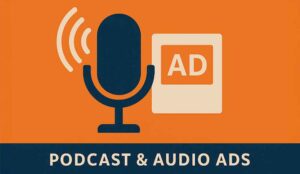 7. Podcast & Audio Ads
7. Podcast & Audio AdsWhat it is: Pre-roll, mid-roll, or host-read ad spots inside podcast episodes or streaming audio.
Why it still works: It’s intimate and built on trust.
Best for: Niche B2B, financial services, wellness, subscription products
Podcast listeners are loyal. And in a landscape of banner blindness and video skips, audio offers a refreshing change. Host-read ads come off like trusted recommendations, especially when the creator has built a relationship with their audience. With targeting now available by topic and listener behavior, this is an ideal ad format for thoughtful storytelling or deeper product education.
Who this channel reaches best:
Podcast listeners are loyal, educated, and often high-income. They skew toward professionals, commuters, and niche interest communities. This makes audio a goldmine for both consumer brands and B2B companies looking to reach decision-makers in targeted verticals.
What creative performs best here:
Host-read ads dominate. They sound personal, trusted, and contextually relevant. Even pre-recorded audio works if it’s written in the voice of the show. Clarity, pacing, and tone matter. And, a unique CTA (like a podcast-specific URL) can drive measurable results.
How this channel fits into the funnel:
Mid-funnel. Podcast ads don’t often generate instant clicks, but they build brand recognition and credibility. They’re great for warming up an audience that’s likely to take action later via search or email.
Common pitfalls to avoid:
Making the read sound scripted. The whole point is authenticity. Also: poor targeting. Not every podcast with a big audience is a good fit…niche relevance matters more than reach.
Trends or innovations in 2025:
AI-powered voice matching is enabling programmatic “host-style” ads that feel more organic. And better attribution tools (like pixel-based podcast tracking) are making it easier to prove ROI to media buyers.
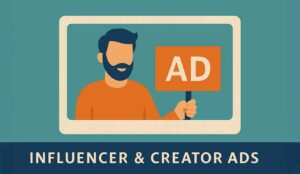 8. Influencer & Creator Ads
8. Influencer & Creator AdsWhat it is: Sponsored partnerships with individuals who have established followings and influence in specific niches.
Why it still works: People trust people more than brands.
Best for: Beauty, wellness, food, parenting, tech, and professional services
Influencer marketing is still evolving but it’s not going anywhere. What changed in 2025 is the level of strategy behind it. The best campaigns now blend branded content with creator storytelling, giving you distribution and creative in one. Whether you’re working with a TikTok creator, a LinkedIn thought leader, or a YouTube reviewer, authenticity drives engagement. The key is to collaborate, not control. Let the creator do what they do best – connect.
Who this channel reaches best:
Influencer and creator ads reach niche, highly engaged communities. This includes everything from fashion and beauty to finance, parenting, and tech. The real power lies in the relationship between the creator and their audience, not just the follower count.
What creative performs best here:
Authentic, first-person content that looks and sounds like the rest of the creator’s feed. Unboxings, tutorials, mini-vlogs, and “storytime” formats all work well (as long as the product or message feels naturally integrated).
How this channel fits into the funnel:
Top-to-mid funnel. Influencer ads are great for sparking awareness and curiosity, but they can also push warm leads over the line if paired with a good offer and link-in-bio strategy.
Common pitfalls to avoid:
Over-scripting creators or forcing rigid brand guidelines. When it feels fake, audiences tune out. Another pitfall: choosing influencers based on vanity metrics instead of engagement or niche alignment.
Trends or innovations in 2025:
Shoppable integrations (TikTok Shop, YouTube Shopping, Instagram Collabs) are blurring the lines between content and checkout. Creators can now host full-funnel campaigns, from awareness to purchase, in a single post or livestream.
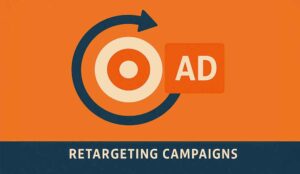 9. Retargeting Campaigns
9. Retargeting CampaignsWhat it is: Ads served to users who’ve interacted with your site, video, or email but didn’t convert.
Why it still works: Familiarity breeds action.
Best for: SaaS, lead gen, e-commerce, professional services
Retargeting is one of the highest ROI channels in digital advertising but it only works if your creative evolves. Static “reminder” ads aren’t enough. Smart retargeting in 2025 looks like personalized storytelling. That means showing different types of advertising creatives depending on where the user dropped off. Think follow-up testimonials, limited-time incentives, or simplified product explanations. Done right, it turns hesitation into action.
Who this channel reaches best:
Retargeting reaches the most valuable group of all: people who already know you. Whether they’ve visited your site, watched a video, or opened an email, these are warm leads who just need a nudge.
What creative performs best here:
Personalized follow-ups based on user behavior. For example: “Still thinking about it?” for abandoned carts, or testimonial videos for someone who viewed a case study page. Keep it short, relevant, and CTA-driven.
How this channel fits into the funnel:
Bottom-of-funnel. Retargeting is built to convert. It’s also great for re-engaging dormant leads or past customers with upsells or new offers.
Common pitfalls to avoid:
Generic creative. If your retargeting ads look the same for every user, you’re missing the point. Also: poor frequency capping can lead to ad fatigue and brand annoyance.
Trends or innovations in 2025:
AI-powered creative rotation and audience segmentation are becoming the norm. Smart brands are sequencing ads based on content consumed (not just recency), to align with the buyer’s mindset.
 10. Trade Publications & Niche Media Buys
10. Trade Publications & Niche Media BuysWhat it is: Sponsored content, banner ads, or video placement in industry-specific newsletters, sites, or magazines.
Why it still works: It puts your message in front of the right people at the right moment.
Best for: Manufacturing, enterprise SaaS, healthcare, legal, finance, education
Sometimes the smallest audiences are the most valuable. Trade media isn’t flashy, but it delivers serious buyers with high intent. Whether it’s a product explainer embedded in an industry article or a sidebar video in a monthly trade digest, these ad formats are highly targeted and often underutilized. This is B2B media buying at its most effective; focused, relevant, and tied to context your buyers already care about.
Who this channel reaches best:
These channels reach decision-makers in specific industries. A vehicle repair shop can aim towards fleet managers. A surgical instrument supplier can go after hospital execs. An educational tech company can target school superintendents. The audience may be small, but they’re precisely who could make a purchase and are often ready to act.
What creative performs best here:
Advertorial-style native content, video explainers, and high-trust case studies. Clean design and smart headlines that speak the language of the industry make a huge difference.
How this channel fits into the funnel:
Mid-to-bottom funnel. It’s especially useful for B2B sales cycles where buyers do heavy research before reaching out. This content often lives in their bookmarks or inbox until it’s time to decide.
Common pitfalls to avoid:
Treating these placements like generic banner ads. You’re talking to experts. Show depth, not fluff. Another issue: underinvesting in creative, assuming the placement alone will do the work.
Trends or innovations in 2025:
Sponsored research, interactive whitepapers, and podcast takeovers within trade networks are gaining traction. These aren’t just ads, they’re assets that build long-term trust.
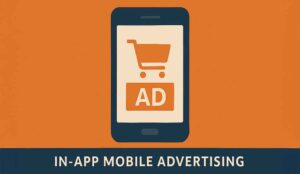 11. In-App Mobile Advertising
11. In-App Mobile AdvertisingWhat it is: Ads delivered directly within mobile apps that are often banner ads, interstitials, or rewarded video units.
Why it still works: It captures attention when users are highly engaged and already active on their device.
Best for: Gaming, fitness, fintech, health apps, food delivery, and entertainment
In-app mobile advertising is often overlooked in favor of social, but it’s a distinct and powerful medium. The targeting is sharp, the engagement is high, and the ad units are built into moments where users are already focused. Whether it’s a rewarded video after a game level or a timely promo in a meditation app, these placements can drive real conversions without interrupting the user experience. They’re also great for boosting app downloads, cross-promotions, or location-based offers.
In 2025, as people spend more time inside specific apps (not just on the open web), this becomes a key part of the paid media mix (especially for mobile-first brands).
Who this channel reaches best:
In-app ads reach users who are already engaged and actively using a product. Whether that’s a game, fitness tracker, or finance tool, the right ad is perfectly matched for users . It’s especially powerful for app-to-app or cross-promotional strategies.
What creative performs best here:
Rewarded video (e.g., watch an ad to unlock a feature), short playable demos, and clean full-screen interstitials. The ad needs to feel seamless and worthwhile, not disruptive.
How this channel fits into the funnel:
Mid-funnel and bottom-funnel. It’s great for driving app installs, in-app purchases, or prompting a return visit after a lapse.
Common pitfalls to avoid:
Low-quality ad creative that frustrates or tricks the user. This reflects poorly on both the advertiser and the host app. Another mistake: not A/B testing frequency of display preferences. Too many interruptions can kill the user experience.
Trends or innovations in 2025:
Playable ads and interactive end cards are becoming more sophisticated. Gamified creative is making even B2B ads viable in lifestyle and productivity apps.
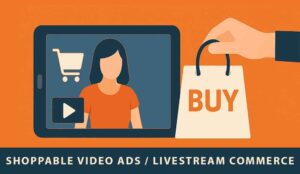 12. Shoppable Video Ads & Livestream Commerce
12. Shoppable Video Ads & Livestream CommerceWhat it is: Interactive video ads where users can click, tap, or shop directly within the content. These are often used during live sales or influencer streams.
Why it still works: It collapses the funnel. Watch, want, buy…all without ever leaving the screen.
Best for: E‑commerce, fashion, beauty, home goods, and impulse-buy products
Shoppable video has exploded in markets like China and is gaining traction in the U.S. across platforms like YouTube, TikTok Shop, and Amazon Live. These ads turn video into a direct response engine blending entertainment and conversion into a single format. Whether it’s a livestream with limited-time drops or a product reel with embedded “Buy Now” buttons, the frictionless path to purchase drives serious results.
For DTC brands with strong visual products and influencer partnerships, this is one of the most efficient types of digital advertising methods in 2025. The key? Make it feel like content, not QVC.
Who this channel reaches best:
This format reaches impulse shoppers and visually driven buyers; especially in beauty, fashion, home goods, and wellness. It’s perfect for mobile-native users comfortable buying directly inside social apps.
What creative performs best here:
Live demos, influencer-led shopping events, or short, punchy video clips with embedded product tags. The best ones feel like entertainment first, with shopping as a frictionless bonus.
How this channel fits into the funnel:
Full funnel. It starts as entertainment, builds awareness mid-stream, and ends in conversion…all in one motion. Very few formats collapse the funnel this efficiently.
Common pitfalls to avoid:
Overly scripted or technical product explanations. If it doesn’t feel spontaneous and engaging, viewers bounce. Another error: too many clicks between viewing and checkout.
Trends or innovations in 2025:
One-click purchasing within platforms like TikTok, YouTube, and Instagram is now standard. AI-generated host scripts are also being used to scale livestreams without losing energy.
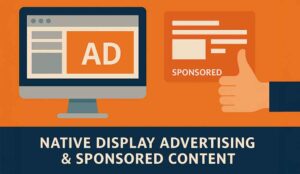 13. Native Display Advertising & Sponsored Content
13. Native Display Advertising & Sponsored ContentWhat it is: Paid content that matches the form and voice of the platform it’s placed in; like promoted articles, editorials, or sponsored features.
Why it still works: When done right, it educates and earns trust without screaming “ad.”
Best for: B2B services, finance, education, healthcare, and thought leadership
Native advertising bridges the gap between advertising and editorial. Whether it’s a sponsored article on Forbes, a feature in a trade publication, or branded content inside a news app, these placements feel more like journalism than marketing. That credibility helps brands build awareness, explain complex topics, and position themselves as trusted experts.
In 2025, sponsored content is especially effective in industries where decision-makers are research-driven. Pair a smart idea with the right platform and your ad becomes part of the story.
Who this channel reaches best:
These advertising campaigns reach thoughtful readers and researchers who are already consuming content in a professional or industry-specific context. It’s ideal for financial services, healthcare, SaaS, and education.
What creative performs best here:
Well-written sponsored articles, branded research, or explainer videos that look and feel like editorial content. If it teaches something genuinely useful, it performs.
How this channel fits into the funnel:
Upper to mid-funnel. It’s a great awareness and trust builder, especially in verticals with complex messaging or long sales cycles.
Common pitfalls to avoid:
Overbranding or “me first” messaging. Native works because it blends in. Lead with value, not hype. Also: failing to track post-click engagement (scroll depth, time on page, etc.)
Trends or innovations in 2025:
AI-powered personalization of article intros, dynamic calls-to-action based on reader behavior, and smart re-skinning of native content across platforms are helping brands stretch each asset further.
 14. Pre-Roll Video Ads
14. Pre-Roll Video AdsWhat it is: Short video advertisements that play before the main video content on platforms like YouTube, news sites, and streaming apps. Formats include skippable (after 5 seconds) and non-skippable (usually 6–15 seconds).
Why it still works: It’s the first thing viewers see. When the creative is tight and targeted, pre-roll delivers high recall and visibility in a short time frame.
Best for: Consumer products, local services, events, apps, and brand awareness campaigns
Pre-roll ads punch above their weight when they respect the viewer’s time. You’ve got five seconds to earn attention—or risk the skip. Brands that succeed here don’t just repurpose TV spots. They craft short, punchy stories that match the platform and feel native to the content experience.
In 2025, smart targeting and AI-assisted placement make pre-roll more efficient than ever. With tighter audience matching and contextual relevance, these ads reach people who are primed to care.
Who this channel reaches best:
Younger, video-first audiences browsing YouTube, free streaming platforms (like Tubi or Pluto), and embedded media players. Also effective for targeting niche interests or local geographies.
What creative performs best here:
Visual-first storytelling with early branding, fast pacing, and a clear hook in the first 3 seconds. Humor, contrast, and relatable pain points work well. Bonus points for cinematic polish or influencer-style authenticity.
How this channel fits into the funnel:
Top of funnel. Pre-roll drives reach and brand recall. When paired with strong CTAs and retargeting, it can help usher viewers into mid-funnel consideration.
Common pitfalls to avoid:
Trying to cram too much into 15 seconds. Or worse, failing to deliver a hook before the “Skip Ad” option appears. Don’t bore, brand too late, or assume people are listening with sound on.
Trends or innovations in 2025:
Auto-generated cutdowns tailored to user behavior (watch history, location, time of day), interactive overlays that allow quick engagement (like “Get Offer” or “Learn More”), and AI-powered voice dubbing for multilingual reach.
The platform of choice doesn’t matter if the messaging doesn’t land. And a great idea still needs the right channel to carry it. These types of advertisements work in 2025 because they match how people actually consume information.
There’s no one-size-fits-all. Some ads build trust. Some drive clicks. The smart move is knowing which one to use when, all the while making sure the creative is strong enough to hold up once it gets there.
That’s the real job: Align the story with the strategy. Pick your moments. Earn the outcome.
Video ad spend is projected to exceed $207 billion in 2025 . No ad format can save bad creative. But when you start with the right story and distribute it through channels that still work, the results can compound.
At Awakened Films, we help brands leverage our Creative Visual Storytelling™ approach to stretch across platforms without losing impact. Whether you’re launching a brand awareness campaign, producing a CTV spot, creating a landing page video, or building short-form social for DTC, we create content people actually want to watch.
Need help with your video marketing?
We don’t just produce ads — we help you make the most of your media.
Learn more about the commercial video production process here: https://awakenedfilms.com/what-commercial-video-producers-know-about-emotion/
Find the right New Jersey based commercial production company in our listicle (updated summer of 2025): https://awakenedfilms.com/tv-commercial-production-companies-in-new-jersey/